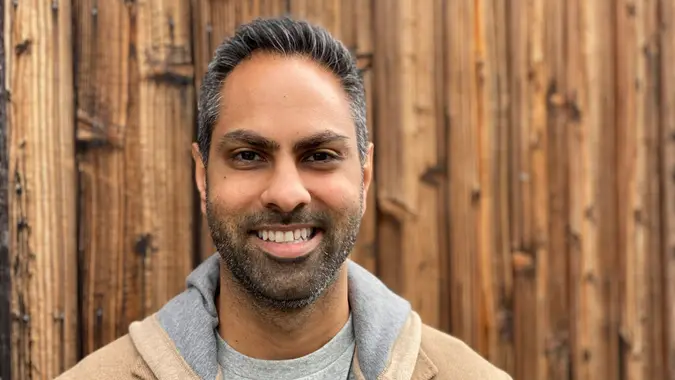Kick-Start a Frugal 2024 With a No-Spend Challenge

Commitment to Our Readers
GOBankingRates' editorial team is committed to bringing you unbiased reviews and information. We use data-driven methodologies to evaluate financial products and services - our reviews and ratings are not influenced by advertisers. You can read more about our editorial guidelines and our products and services review methodology.

20 Years
Helping You Live Richer

Reviewed
by Experts

Trusted by
Millions of Readers
No-spend challenges have been gaining lots of momentum in recent years, as they can be a good way to jump-start savings. But there are lots of ancillary benefits to a no-spend challenge that persist even after the actual “challenge period” has passed.
As we’re at the time when New Year’s resolutions are being made, it’s a great chance to kick-start a frugal 2024 by creating your own no-spend challenge. Here are some tips to help you get started, along with a deeper look at the ongoing benefits you can reap.
What Is a No-Spend Challenge?
A no-spend challenge is an agreement you make with yourself or others to not spend money for a given period of time. There are all kinds of no-spend challenges, and you may want to tailor your challenge based on your own personal spending habits.
For example, if you splurge too much on travel, you might want to create a “no travel spend” challenge for one month, six months, or even one full year. If you find yourself eating out three times a week, consider a “no eating out” challenge for one month.
Some no-spend challenges are more all-encompassing, forbidding spending on anything except necessary living expenses, such as rent, groceries and utilities and health care.
Regardless of how you structure it, a no-spend challenge requires you to stop spending on certain items for a specified period of time. It can be a great way to kickstart your frugal 2024 because you’ll, by definition, be spending less money than you normally would right from the start of the year.
What About After the No-Spend Challenge?
The benefits of a no-spend challenge should extend long after you complete it. In fact, rather than a one-time improvement to your finances, it should change how you look at and spend money going forward.
Here are two ways to leverage the jump-start that a no-spend challenge provides.
Sharpen Your Budget
The true long-term benefit of a no-spend challenge is that it can bring your budget into sharper focus. After you’ve gone a month without spending anything at all on eating out, for example, you might realize that you enjoy cooking at home — especially when you look at how much money you actually saved by doing it.
You might also discover that certain things you would casually spend money on, such as random shopping trips, didn’t really do much to improve your quality of life. After living without certain things for a month, you might learn that you can live without them forever.
Amp Up Your Savings and Investments
The best way to leverage a no-spend challenge is to divert the money you would have spent on discretionary items into your savings and investments. Not only will this boost your overall financial security, you might actually feel better seeing your account balances grow instead of watching your money fly out the door every month.
Another good option for your no-spend challenge money is to pay down any credit card debt you may have. Debt not only accrues interest but also drains your cash flow every month. If you can get in the habit of paying down that debt, you’ll be much better off in the long run financially.
What To Watch Out For
Any time you make a dramatic change in your life, there are risks. Here are some of the things you should be sure to watch out for as you complete your no-spend challenge.
Don’t ‘Bounce Back’
When people go on a diet, there’s a real risk of gaining weight back after they stop. The same is true when it comes to a “financial diet” like a no-spend challenge.
After denying yourself the joy of spending on certain things you like, such as eating out, shopping or traveling, it’s common to feel the urge to “reward yourself” by splurging once again. But just like with a yo-yo diet, this type of bouncing back to your original spending patterns — or even worse, spending even more — could leave you in a worse position than before you even started the challenge.
Be mentally prepared for this type of feeling after your no-spend challenge and put barriers in place to prevent yourself from “bouncing back.”
Watch Lifestyle Creep
Lifestyle creep refers to the habit of increasing your spending when you earn more money. It’s a natural tendency, as most people feel entitled to reward themselves when they work hard and earn more money. Unfortunately, it’s hard to boost your savings and investments when you’re continually increasing your spending as well.
After a no-spend challenge, it can be tempting to use the full amount of any raises you get on discretionary items, as you may feel like you have already trimmed your budget to the appropriate level. But a better way to get ahead financially is to use the bulk of any additional income to boost your savings and investments.
 Written by
Written by  Edited by
Edited by 
























